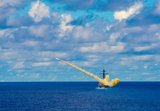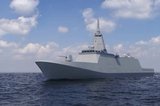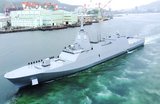Taiwan reinvigorates its asymmetrical approach to naval warfare
The ROCN took possession of the 3,250t Da Wu, the first of a new class of rescue and salvage vessels, on 23 October. (Photo: CSBC)
Taiwan faces an existential threat from China as People’s Liberation Army (PLA) aircraft and warships harass the island on a daily basis. The Republic of China Navy (ROCN) is confronting both grey-zone tactics and the threat of a Chinese blockade or full-blown invasion.
A ‘porcupine’ strategy, promulgated in Taiwan’s 2018 Overall Defense Concept policy, called for platforms and asymmetric capabilities to deter a Chinese invasion. This strategy, however, was not wholeheartedly pursued, and the concept disappeared from subsequent Ministry of National Defense (MND) documents.
The ROCN continued to field a traditionally structured navy, but there are renewed signs that the
Already have an account? Log in
Want to keep reading this article?
More from Naval Warfare
-
![Mitsubishi eyes future with Australia’s Mogami selection]()
Mitsubishi eyes future with Australia’s Mogami selection
With Australia’s selection of the Mogami-class for Project Sea 3000, Mitsubishi is investigating local production in the next decade as potential export opportunities emerge.
-
![Thales’ new Sonar 76Nano could equip UK Royal Navy on anti-submarine warfare missions]()
Thales’ new Sonar 76Nano could equip UK Royal Navy on anti-submarine warfare missions
The new sonar is designed to equip uncrewed underwater vessels, with the potential to be used by the Royal Navy for its Atlantic Bastion and Atlantic Net missions.
-
![Hanwha wins Australian government approval to increase its stake in Austal]()
Hanwha wins Australian government approval to increase its stake in Austal
The contract would mean the two shipbuilders can collaborate strategically and enhance shipbuilding capabilities in Western Australia.






















